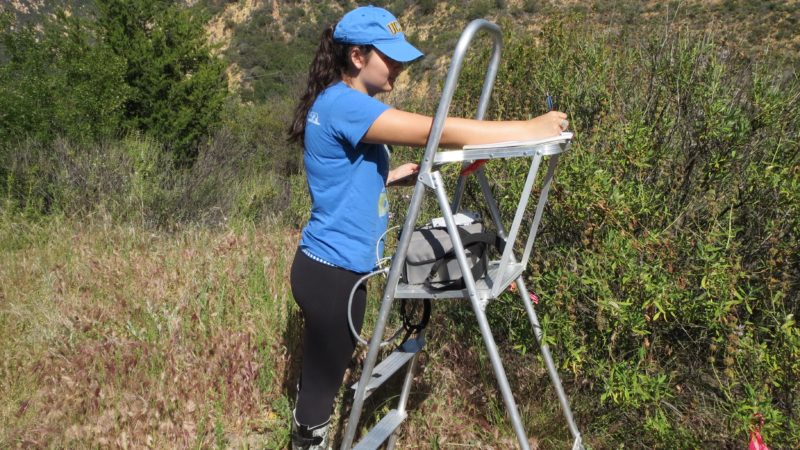Awardee: Ariel Pezner
Department: Ecology and Evolutionary Biology
Funding Source: Stunt Ranch Research Grant
My research focuses on the effects of drought on the chlorophyll fluorescence of four drought deciduous and evergreen plant species native to Southern California. The sage scrub plants found in the chaparral biomes of coastal Southern California generally fall into one of two categories: drought deciduous shrubs or evergreen shrubs. Drought-deciduous species go dormant in the hot, dry summers and bloom in the fall, whereas evergreen shrubs are green yearround. As these species make up the majority of coastal and mountainous ecosystems in Southern California, measuring how each type responds to increased environmental stress becomes important to the ecosystem as a whole. This can be measured using chlorophyll fluorescence, which quantifies the light energy that has not been used in powering photosynthesis or released as heat, and is instead reemitted to the environment. Chlorophyll fluorescence provides data on the productivity and efficiency of the photosynthetic system, and can be used to infer the health of the plant. I have been taking measurements for this project at the UCLA Stunt Ranch Reserve in the Santa Monica Mountains since the Winter of 2015. Using the Stunt Ranch Research Grant, I plan to continue to record these baseline measurements over a longer period of time and through multiple seasons. I hope to eventually use the results to model the future impacts of drought and climate change on this ecosystem. As California’s drought continues and the temperatures rise, it will become increasingly important to determine the longterm effects of this water stress on California’s native plant species.

